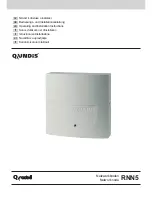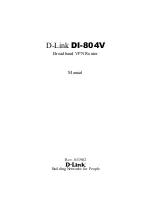
Using a PT Controller: Troubleshooting
©
2017 Sensata Technologies
Page 149
•
Int Power-PT
– The internal power control circuity reached its protection limits.
Remedy:
When this fault condition occurs, the controller shuts down to help protect
itself. Press the RESET pushbutton for one second to turn the controller on and to verify
the fault has cleared. If the fault remains, the controller will require repair.
•
Int Pwr Sup-PT
– The voltage from the auxiliary power supply in the controller has dropped
to a low level.
Remedy:
Check for a loading of the power circuit on the PT controller’s NETWORK or
STACK port. This happens if an accessory cable that is plugged into the PT controller
has shorted, or an accessory—that should be powered externally—is plugged into the
PT controller and is attempting to be powered from one of the PT’s ports.
Remove any cable plugged into the NETWORK (or STACK) port and also check these
two ports for debris, then clear the fault by pressing the PT’s RESET pushbutton for
one second. If the fault continues—after removing all cables, checking the ports for
cleanliness and pressing the RESET button—the controller requires service.
•
No PV Input-PT
– No source of PV has been power detected on the PV input terminals (i.e.,
PV+ to PV-) for more than 24 hours.
Remedy:
Check for an open breaker to the PV input, a bad PV wire connection to the PV
terminals on the PT controller, or a long period (>24 hours) of no sun or very low sun.
Note:
The fault automatically clears and the unit resumes operation once the voltage to
the PV terminals is >5 volts above the battery voltage.
•
No Stack Comm-PT
– The PT controller will not run because stacking has been enabled (DIP
switch 10 is set to UP), but the controller is not receiving any network communications from
the Magnum inverter.
Remedy:
This fault can be caused by:
1. Stacking mode was inadvertently/incorrectly enabled (DIP switch 10 set UP).
a) Disable stacking (if it is not needed) by setting DIP switch 10 to DOWN.
2. An open, incorrect or disconnected network cable.
a) Examine the network cable for any damage, and replace if needed.
b) Ensure the correct network cable is used.
c) Ensure the network cable is connected to the inverter’s and controller’s NETWORK
port. Listen and make sure you hear an audible “click” when inserting the connector
into the networks ports.
d) Inspect both ends of each cable to ensure they are clean and not damaged; also
inspect the ports to ensure there is no debris or damage.
e) Try another network cable.
3. The inverter is not powered, or its NETWORK communication port is faulty.
a) Ensure the inverter has power and is able to turn on and off.
b) If the router is powered and communicating, then the remote port is working; in
this case, remove the network cable from the NETWORK port and connect it to the
inverter’s REMOTE port to see if it now starts communicating.
The fault will automatically clear and the controller will begin operation once the
controller is able to communicate on the network.
Summary of Contents for ME-ARTR
Page 1: ...ME ARTR Advanced Router Owner s Manual Version 4 0 ...
Page 181: ...NOTES ...
















































